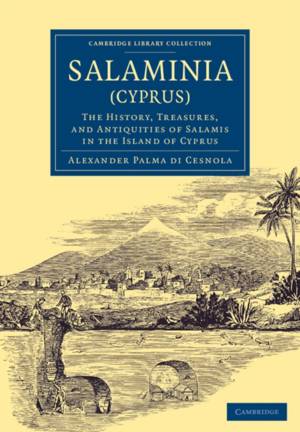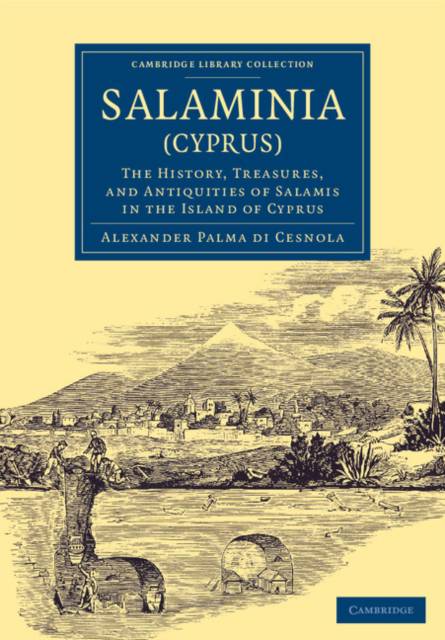
- Afhalen na 1 uur in een winkel met voorraad
- Gratis thuislevering in België vanaf € 30
- Ruim aanbod met 7 miljoen producten
- Afhalen na 1 uur in een winkel met voorraad
- Gratis thuislevering in België vanaf € 30
- Ruim aanbod met 7 miljoen producten
Zoeken
Salaminia (Cyprus)
The History, Treasures, and Antiquities of Salamis in the Island of Cyprus
Alexander Palma Di Cesnola
€ 80,95
+ 161 punten
Uitvoering
Omschrijving
Alessandro Palma Di Cesnola (1839-1914) travelled to Cyprus in 1873 to take up an honorary post secured by his brother Luigi, who was the American consul there and also an amateur archaeologist. Obtaining funding from the British financier Edwin Lawrence, Alessandro carried out his own excavations, chiefly around Salamis. Replete with more than 700 illustrations, this 1882 publication records the most notable artefacts from the Lawrence-Cesnola collection, including gold jewellery, ivory objects, engraved gems, coins, and terracotta statuettes. The book sheds considerable light on the ancient Egyptian, Phoenician, Greek and Roman influences that shaped Cypriot art over the centuries. Di Cesnola's activities generated controversy, however, as he had flouted regulations in removing these artefacts. After the British Museum declined to acquire the whole collection, the bulk of it was sold at auction. His brother's finds were recorded in Cyprus: Its Ancient Cities, Tombs, and Temples (1877), which is also reissued in this series.
Specificaties
Betrokkenen
- Auteur(s):
- Uitgeverij:
Inhoud
- Aantal bladzijden:
- 444
- Taal:
- Engels
- Reeks:
Eigenschappen
- Productcode (EAN):
- 9781108078627
- Verschijningsdatum:
- 12/03/2015
- Uitvoering:
- Paperback
- Formaat:
- Trade paperback (VS)
- Afmetingen:
- 170 mm x 244 mm
- Gewicht:
- 703 g

Alleen bij Standaard Boekhandel
+ 161 punten op je klantenkaart van Standaard Boekhandel
Beoordelingen
We publiceren alleen reviews die voldoen aan de voorwaarden voor reviews. Bekijk onze voorwaarden voor reviews.











